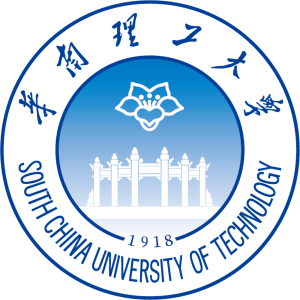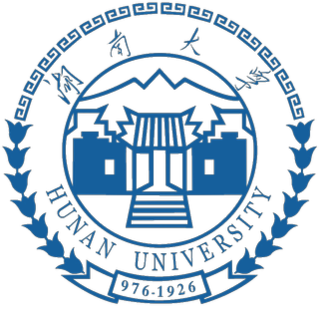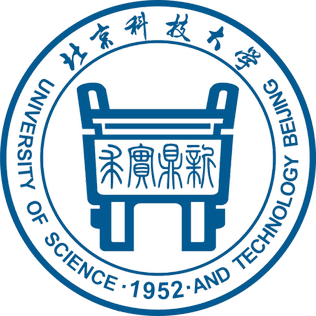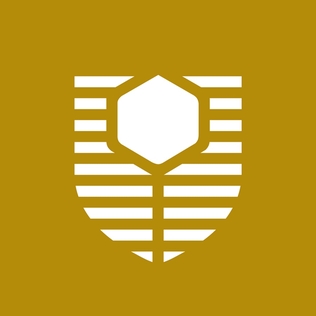
The South China University of Technology (SCUT) is a public university in Guangzhou, Guangdong, China. It is affiliated with the Ministry of Education and co-sponsored with the Guangdong Provincial People's Government. The university is part of Project 211, Project 985, and the Double First-Class Construction.
College and university rankings order higher education institutions based on various criteria, with factors differing depending on the specific ranking system. These rankings can be conducted at the national or international level, assessing institutions within a single country, within a specific geographical region, or worldwide. Rankings are typically conducted by magazines, newspapers, websites, governments, or academics.

Hunan University is a public university in Yuelu, Changsha, Hunan, China. It is affiliated with the Ministry of Education. The university is part of Project 211, Project 985, and the Double First-Class Construction.
Three national rankings of universities in the United Kingdom are published annually by The Complete University Guide, The Guardian and jointly by The Times and The Sunday Times. Rankings have also been produced in the past by The Daily Telegraph and Financial Times. UK Universities also rank highly in global university rankings with 8 UK Universities ranking in the top 100 of all three major global rankings as of 2023/24: QS World University Rankings, Times Higher Education World University Rankings and Academic Ranking of World Universities.

The University of Science and Technology Beijing is a public university in Haidian, Beijing, China. It is affiliated with the Ministry of Education. The university is part of Project 211 and the Double First-Class Construction. The university was formerly known as Beijing Steel and Iron Institute (北京钢铁学院) before 1988.

China Agricultural University (CAU) is a public university in Haidian, Beijing, China. The university is affiliated with the Ministry of Education of China. It is part of Project 211, Project 985, and the Double First-Class Construction.

The University of Science and Technology of China (USTC) is a public university in Hefei, China. It is affiliated with the Chinese Academy of Sciences, and co-funded by the Chinese Academy of Sciences, the Ministry of Education of China, and the Anhui Provincial Government. It is part of Project 211, Project 985, and the Double First-Class Construction.

Curtin University Malaysia is the Malaysian campus of Curtin University, a public university based in Australia. It is the university's largest campus outside of Australia with a total area of 1,200-hectare (3,000-acre) comprising academic and residential blocks. It offers undergraduate and postgraduate programs in various fields of commerce, engineering, computational sciences, humanities and health sciences. It also offers foundational courses and a Doctor of Philosophy (PhD) among other higher degree by research programs. It is named after John Curtin, a prominent Prime Minister of Australia during World War II from 1941 to 1945.

Northwest A&F University is a national public university located in Yangling District, Xianyang, Shaanxi, China. It is affiliated with the Ministry of Education of China. The university is part of Project 211, Project 985, and the Double First-Class Construction.

The Times Higher Education World University Rankings, often referred to as the THE Rankings, is the annual publication of university rankings by the Times Higher Education magazine. The publisher had collaborated with Quacquarelli Symonds (QS) to publish the joint THE-QS World University Rankings from 2004 to 2009 before it turned to Thomson Reuters for a new ranking system from 2010 to 2013. In 2014, the magazine signed an agreement with Elsevier to provide it with the data used in compiling its annual rankings.
The QS World University Rankings is a portfolio of comparative college and university rankings compiled by Quacquarelli Symonds, a higher education analytics firm. Its first and earliest edition was published in collaboration with Times Higher Education (THE) magazine as Times Higher Education–QS World University Rankings, inaugurated in 2004 to provide an independent source of comparative data about university performance. In 2009, the two organizations parted ways to produce independent university rankings, the QS World University Rankings and THE World University Rankings.

Hierarchical lists that rank universities are regularly published by the popular press. Intended originally as a marketing or a benchmarking tool, university rankings have become apart of many countries research evaluation and policy initiatives. These different tables attempt to fulfill a demand for information and transparency. However, rankings influence evaluation choices and distort higher education policies. List producers allow well remunerated vice-chancellors to claim a top spot for their university in an educational league. These ranking, the publishers claim, are determined by quantitative indicators. Published research suggests otherwise, rankings are re-shaping public education and harming the academic project. According to an Independent Expert Group (IEG), convened by the United Nations University International Institute for Global Health, Global university rankings are

Nanjing University (NJU) is a public university in Jiangsu, China. It is affiliated and sponsored by the Ministry of Education. The university is part of Project 211, Project 985, and the Double First-Class Construction. The university is a member of the C9 League.

Curtin Mauritius is the Mauritian campus of Curtin University, a public university in Australia. It offers undergraduate and postgraduate degree programs in healthcare, information technology, commerce, design and communications. Curtin University is named after John Curtin, a prominent Prime Minister of Australia during World War II from 1941 to 1945, and is the largest university in the state of Western Australia with 58,607 students globally in 2022. It is the only Australian university campus in Africa and was formally opened on 3 May 2018 by Pravind Jugnauth, the prime minister of Mauritius.
Guangzhou Medical University is a municipal public medical university in Guangzhou, Guangdong, China. It is affiliated with the City of Guangzhou and funded by the municipal government. The university is part of the Double First-Class Construction.

Higher education in the Arab world is non-compulsory, formal education that occurs after secondary education in the twenty-two Arab states. The landscape of higher education in the Arab world is characterized by its dynamic evolution, reflecting the region's diverse cultural and socio-economic contexts across 22 countries in the Middle East and North Africa. From its origins in ancient centers of learning to the modern institutions shaping intellectual discourse today, the sector has undergone significant transformations throughout history.
The University Ranking by Academic Performance (URAP) is a university ranking developed by the Informatics Institute of Middle East Technical University. Since 2010, it has been publishing annual national and global college and university rankings for top 2000 institutions. The scientometrics measurement of URAP is based on data obtained from the Institute for Scientific Information via Web of Science and inCites. For global rankings, URAP employs indicators of research performance including the number of articles, citation, total documents, article impact total, citation impact total, and international collaboration. In addition to global rankings, URAP publishes regional rankings for universities in Turkey using additional indicators such as the number of students and faculty members obtained from Center of Measuring, Selection and Placement ÖSYM.
As of 2020, China had the world's second-highest number of top universities in several most cited international rankings including the Academic Ranking of World Universities (ARWU), the U.S. News & World Report Best Global University Ranking, the Center for World University Rankings (CWUR), the Performance Ranking of Scientific Papers for World Universities and the Three University Missions Ranking.
Capital Medical University is a municipal public university in Beijing, China. It is affiliated with the City of Beijing, and co-funded by the Beijing Municipal People's Government, the National Health Commission, and the Ministry of Education.












